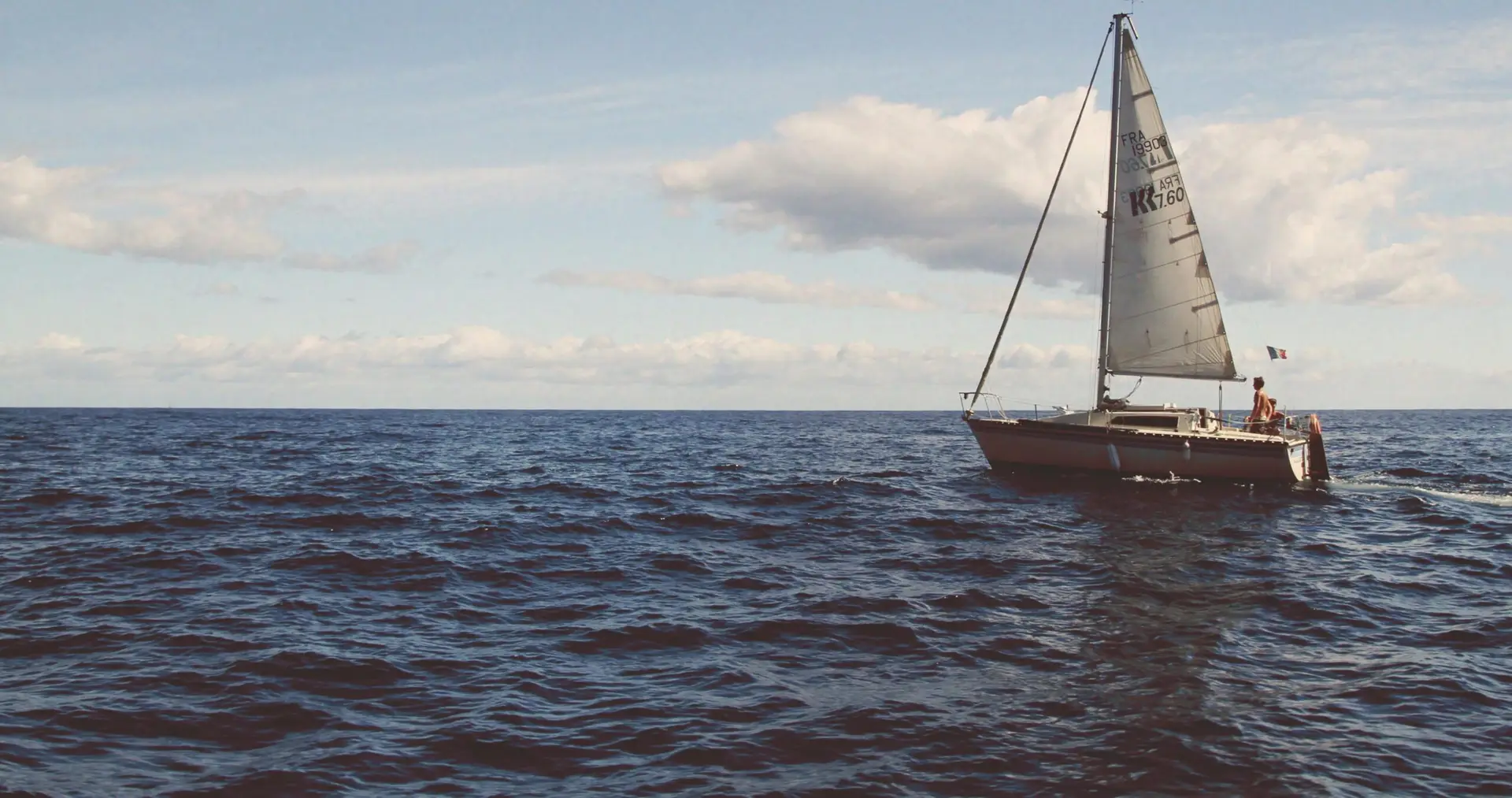
MdDS Doctor Near Me: Feeling like you’re still on a boat days or weeks after a trip can be disorienting and exhausting. For many people, this persistent rocking, swaying, or bobbing isn’t “just in your head”—it’s Mal de Débarquement Syndrome (MdDS), a complex vestibular condition that can turn everyday tasks into uphill battles. If you’ve been searching for an “MdDS doctor near me” and you live in or around Sarasota, Bradenton, Lakewood Ranch, Parrish, Ellenton, Venice, Osprey, St. Petersburg, Siesta Key, Longboat Key, Lido Key, Punta Gorda, or Myakka City, this guide is for you.
At Lavender Family Chiropractic, we focus exclusively on the upper cervical spine—the precise junction where the head and neck meet and where your balance, posture, and autonomic functions are constantly coordinated. Our clinical experience shows that subtle misalignments of the atlas (C1) and axis (C2) can distort the way your brain interprets motion and orientation—fueling symptoms like rocking, dizziness, visual motion sensitivity, head pressure, and brain fog. Through gentle, targeted corrections—without popping, twisting, or cracking—and objective, technology-guided care, many MdDS patients find steady, meaningful relief.
Our doctors—Dr. Rusty Lavender, Dr. Jacob Temple, and Dr. Will Guzinski—use 3D CBCT imaging and Tytron functional nervous system scans to locate and correct the underlying neurological stress in the upper neck. If you’re looking for a “chiropractor Sarasota Florida,” “upper cervical chiropractor near me,” “vertigo doctor near me,” or help with BPPV, vestibular migraine, PPPD, or chronic dizziness, you’re in the right place.
MdDS Doctor Near me: What Is MdDS—and Why Does It Feel Like You’re Still in Motion?
Mal de Débarquement Syndrome literally means “sickness of disembarkment.” Classically, MdDS starts after sea or air travel: the body adapts to continuous motion, then, once the motion stops, your internal sense of movement doesn’t recalibrate properly. Instead of feeling still, your brain continues to perceive rocking, bobbing, or swaying, as if you’re on a boat, a dock, or a trampoline. Some people develop spontaneous MdDS—with no clear travel trigger—after illness, stress, hormonal shifts, head/neck strain, or seemingly out of nowhere.
MdDS can be life-altering. Grocery stores, computer screens, and busy visual environments can ramp symptoms up. Standing still may feel harder than walking. Many people notice a peculiar pattern: symptoms ease while in passive motion (like riding in a car) and return when still. That motion-relief pattern can help distinguish MdDS from other vestibular disorders, though overlap is common.
Importantly, MdDS is a functional problem—how your nervous system is processing input—not necessarily a structural disease visible on standard imaging. That’s why normal ENT, MRI, or neurological tests don’t rule it out. And that’s exactly why looking at the upper cervical spine—the gatekeeper region for vestibular integration—can be transformative.
Common MdDS Symptoms
- Persistent rocking, swaying, or bobbing sensation
- Unsteadiness, especially when standing still
- Head pressure or fullness (often behind the eyes or ears)
- Brain fog, mental fatigue, and difficulty concentrating
- Visual motion sensitivity (busy patterns, scrolling, big-box stores)
- Ear pressure, ear crackling, or occasional tinnitus
- Dizziness without classic spinning vertigo
- Heightened anxiety or low mood due to constant disequilibrium
- Neck stiffness, soreness, or a history of neck strain/whiplash
Everyone’s symptom mix is unique, but the day-to-day impact is similar: MdDS can shrink your world. The good news is that the nervous system is adaptable. With the right inputs—and the removal of the wrong ones—it can recalibrate.
How MdDS Differs from BPPV, Vestibular Migraine, Meniere’s, and PPPD
Vestibular conditions often blend together, which leads to mislabeling and incomplete care. Knowing the differences helps you pursue the right solution:
- BPPV (Benign Paroxysmal Positional Vertigo): Short bursts (seconds) of spinning when you roll in bed, look up/down, or change head position. Caused by displaced ear crystals (otoconia). Often responds to canalith repositioning maneuvers (e.g., Epley). Upper cervical misalignment can make BPPV recur by altering nerve input and head-neck mechanics.
- Vestibular Migraine: Episodic dizziness, visual motion sensitivity, light/sound sensitivity, head pressure, and sometimes headache. Involves brainstem hypersensitivity and sensory mismatch. The C1/C2 region influences brainstem regulation—upper cervical care often complements migraine management.
- Meniere’s Disease: Vertigo episodes lasting 20 minutes to hours, fluctuating hearing loss, tinnitus, and ear fullness. Thought to involve inner ear fluid dynamics. Cervical and autonomic influences can affect fluid balance and pressure; many Meniere’s patients also have upper neck dysfunction.
- PPPD (Persistent Postural-Perceptual Dizziness): Chronic dizziness and unsteadiness worsened by upright posture, movement, and complex visual environments. Often follows an acute vestibular event. Involves central processing and sensory weighting. Head-neck proprioception (driven by upper cervical alignment) is a major contributor.
- MdDS: Rocking/swaying/bobbing that improves in passive motion and returns at rest; often post-travel. It reflects a maladapted internal model of motion—a network issue linking the vestibular system, visual system, and proprioception (including the neck).
Across these conditions, one theme repeats: the brainstem and its inputs—inner ear, eyes, and neck proprioceptors—must agree. When the upper cervical spine is subtly off, that agreement breaks down, and symptoms follow.
Why the Upper Cervical Spine Matters So Much for Balance
The atlas (C1) cradles your skull and wraps around the brainstem, while the axis (C2) provides head rotation. Together, C1/C2 coordinate:
- Neck proprioception: millions of sensors reporting head position
- Brainstem autonomic regulation: heart rate, blood pressure, arousal
- Vestibulo-ocular reflex (VOR): stabilizing vision during head movement
- Cerebrospinal fluid (CSF) flow and venous drainage: pressure homeostasis
- Cervical-vestibular integration: combining ear, eye, and neck inputs
A subtle atlas shift—sometimes measured in fractions of a degree—can distort these systems. That’s why standard X-rays or MRIs may look “normal,” but function isn’t normal. When C1/C2 mechanics are off:
- Neck proprioceptors send inaccurate head-position data, forcing the brain to reconcile conflicting information from the eyes and ears.
- Brainstem nuclei involved in vestibular processing can become hyper- or hypo-responsive, changing how motion is perceived.
- CSF and venous outflow can be less efficient, contributing to head pressure or visual strain.
- The VOR may drift or become unstable, complicating visual motion sensitivity.
Correct the misalignment, and you often clear the noise at the source—the brainstem and its incoming data—so your body can recalibrate toward stillness again.
Upper Cervical Chiropractic at Lavender Family Chiropractic (No Popping, Twisting, or Cracking)
Upper cervical chiropractic is precise, gentle, and individualized. At Lavender Family Chiropractic in Sarasota, we use an evidence-informed protocol built on measurement, specificity, and verification:
- In-Depth Consultation and History
We review symptom triggers, travel exposure, visual sensitivities, neck history (whiplash, concussion, strain), sleep, stress, hormones, and prior evaluations. Our goal: map your unique vestibular story. - Objective Functional Testing
- Postural assessment and head-neck alignment analysis
- Tytron functional nervous system scan (paraspinal infrared thermography) to detect thermal asymmetries reflecting neurological stress patterns
- Targeted balance and eye-movement screens (as indicated)
- 3D CBCT Imaging of C0-C1-C2
Our 3D Cone Beam CT captures your individual atlas/axis anatomy in three dimensions. We measure minuscule angular shifts and joint relationships you can’t see on 2D images. This precision guides every correction we make. - Customized, Gentle Atlas/Axis Corrections
We deliver a light, specific adjustment tailored to your exact measurements—often described as a gentle pressure behind the ear. There’s no twisting, popping, or cracking. Think precision over force. - Immediate Re-Scanning and Ongoing Verification
After each correction, we re-scan with Tytron to ensure the neurological pattern is trending toward symmetry. Over time, this shows the nervous system stabilizing—your roadmap out of rocking and fog. - Stabilization, Spacing, and Self-Care
As your corrections “hold” longer, we space visits appropriately. We also guide neck-friendly habits, sleep ergonomics, and simple vestibular tolerance strategies tailored to your needs.
What MdDS Patients Commonly Report as Care Progresses
While every case is unique, MdDS patients often describe a sequence of improvements:
- Early changes (days to weeks):
- “The rocking intensity dialed down.”
- “I can stand still a little longer.”
- “Head pressure and brain fog are easing.”
- “Grocery stores aren’t as overwhelming.”
- Intermediate phase (weeks to months):
- “Good days are more frequent than bad days.”
- “I feel steadier in the shower, on stairs, or on uneven surfaces.”
- “I can tolerate screens and visual motion better.”
- “I’m returning to driving, gym, or work routines.”
- Stabilization (months):
- “I hardly notice rocking anymore.”
- “I can travel with a plan—and recover quickly.”
- “My neck feels freer; my posture is easier.”
- “My anxiety is lower because my body finally feels reliable.”
The most powerful sign of progress isn’t perfection—it’s consistency: more stable days, shorter flares, quicker recovery from triggers, and longer-lasting atlas corrections.
Who Is a Good Candidate for Upper Cervical Care with MdDS-Type Symptoms?
You’re likely a good candidate if you have:
- Persistent rocking/swaying that improves in passive motion
- A history of travel exposure, neck strain, whiplash, concussion, or prolonged postural stress
- Visual motion sensitivity, head pressure, or brain fog that co-exists with neck tightness
- Normal ENT/neurology imaging but ongoing functional symptoms
- A desire for a gentle, precise, and measurable approach without twisting or cracking
You don’t need a formal MdDS diagnosis to start. Many patients have mixed labels (BPPV history, vestibular migraine features, or PPPD overlap). If your upper neck is part of the problem, addressing it can unlock your system’s capacity to settle.
Why Many Vestibular Patients Choose Lavender Family Chiropractic
- Exclusive Upper Cervical Focus: We don’t do “everything.” We do the top of the neck with obsessive precision.
- 3D CBCT + Tytron: We measure, correct, and verify—objectively—every step of the way.
- Gentle, Evidence-Informed Care: No popping or twisting. Precision over force.
- Three-Doctor Team: Dr. Rusty Lavender, Dr. Jacob Temple, and Dr. Will Guzinski collaborate on complex cases.
- Patient-Centered Plans: We tailor frequency and pacing to your nervous system’s response.
- Regional Reach: Patients travel from Sarasota, Bradenton, Lakewood Ranch, Parrish, Ellenton, Venice, Osprey, Punta Gorda, St. Petersburg, Siesta Key, Longboat Key, Lido Key, and Myakka City for care.
- Trusted in the Community: Known locally as a “vertigo doctor near me,” “chiropractor near me,” “upper cervical chiropractor near me,” and “migraine doctor near me.”
At-Home Strategies That Pair Well with Upper Cervical Care
These do not replace clinical care, but they complement your progress:
- Neck-Kind Posture: Keep screens at eye level; avoid end-range neck positions; use a supportive pillow to maintain neutral alignment.
- Visual Dosing: Gradually increase exposure to visually busy environments. Short, structured increments help the brain relearn stillness without overload.
- Hydration and Minerals: Support vascular and neural function with steady hydration and balanced nutrition.
- Light Movement: Gentle walking or stationary cycling can soothe the nervous system, especially if passive motion temporarily eases symptoms.
- Trigger Journaling: Track patterns (sleep, stress, hormones, screen time) so we can personalize strategies.
When We Co-Manage or Refer Out
Upper cervical care is powerful, but comprehensive support sometimes requires collaboration. We may refer or co-manage if you have:
- Sudden hearing loss, severe neurological red flags, or acute trauma needing urgent imaging or specialty care
- Complex visual-vestibular integration needs requiring a neuro-optometrist’s input
- Medication management, migraine protocols, or hormonal considerations with your primary or specialist
Our goal is simple: coordinate the right care at the right time, with upper cervical alignment as the foundation.
Case Snapshots (Names Changed for Privacy)
- “S.” (Post-Cruise Rocking): Six months of bobbing and store-induced disequilibrium after a cruise. Normal ENT workup. CBCT revealed right atlas rotation; Tytron showed asymmetric thermal pattern. After the first two gentle atlas corrections, she reported “the ground feels steadier.” At eight weeks: short grocery trips without overwhelm, head pressure down 70%, corrections holding longer between visits.
- “J.” (Spontaneous MdDS-Like Onset): No travel trigger; symptoms began after hormonal stress and prolonged laptop posture. Visual motion was worst in big-box stores. CBCT showed cranial-cervical misalignment; targeted care reduced rocking by half within a month. At three months he resumed gym routines and cut screen-triggered dizziness significantly.
- “L.” (Mixed Vertigo History): Past BPPV episodes plus persistent rocking after flights. Despite Epley success for spinning attacks, the constant swaying remained. After upper cervical stabilization, she noticed fewer flares and faster recovery from travel. By month four, she booked a short flight with a plan and recovered in 24–48 hours.
These are typical of what we see: when you free the brainstem from upper neck interference, the whole balance system becomes more reliable.
What to Expect on Your First Visit
- Conversation: We’ll listen carefully—what you’ve tried, what helped, what made things worse, and what you want back in your life.
- Objective Testing: Postural analysis, Tytron scan, and other simple functional screens tailored to your case.
- 3D CBCT (if indicated): Detailed atlas/axis imaging that guides a precise, personalized plan.
- First Gentle Correction (when appropriate): No twisting or cracking—just specific physics-based alignment.
- Verification: Post-correction re-scan and clear next steps so you know what to expect.
Most people describe their first correction as surprisingly light—and many notice clearer head space, easier breathing, or steadier footing right away. Healing is a process; we chart progress together.
Top 15 FAQs About MdDS, Vertigo, and Upper Cervical Chiropractic
- What exactly is MdDS?
MdDS is a functional vestibular disorder characterized by persistent rocking, swaying, or bobbing, often after travel. It reflects how the brain processes motion signals rather than a structural lesion. - How can upper cervical chiropractic help MdDS?
By restoring precise alignment of C1/C2, we aim to normalize neck proprioception, brainstem regulation, CSF/venous dynamics, and vestibular-ocular coordination—inputs your brain uses to feel “still.” Many MdDS patients report meaningful reductions in rocking and visual motion sensitivity as their corrections begin to hold. - Is this different from traditional chiropractic?
Yes. Upper cervical care focuses on the top two vertebrae with gentle, specific corrections—no popping, twisting, or cracking. It’s guided by 3D CBCT measurements and Tytron scans. - What technology do you use?
We use 3D CBCT imaging to see your atlas/axis in three dimensions, plus Tytron functional thermography to map neurological stress and verify improvement after each correction. - How soon will I feel better?
Timelines vary. Some notice early changes in head clarity or steadiness after the first few visits. Others need several weeks to see consistent progress. The key metric is how well and how long your correction holds. - Can upper cervical care help with BPPV, Meniere’s, vestibular migraine, or PPPD?
It can help by addressing the neck-to-brainstem-vestibular link present across these conditions. We often see fewer recurrences, shorter flares, and improved tolerance to visual motion as the neck stabilizes. - Do the adjustments hurt?
No. Corrections are light and precise. Most patients are surprised by how gentle they are. - What if my tests and scans elsewhere were normal?
That’s common. Standard imaging looks for structural disease. We focus on functional alignment—a tiny atlas error can create big sensory mismatches even when conventional imaging is “normal.” - How many visits will I need?
It depends on how quickly your corrections stabilize, your health history, and triggers (travel, hormone fluctuations, stress, posture). We customize care and space visits out as you hold better. - Do you adjust kids or seniors?
Yes. We tailor techniques to age, bone density, and health needs—with the same emphasis on gentle precision. - What if I’ve tried vestibular therapy already?
Great—upper cervical care often enhances your gains by removing neck-driven noise. Many patients find therapy sticks better once the atlas is holding. - Can this help ear fullness, pressure, or crackling?
Often, yes. The upper neck influences autonomic tone, venous/CSF outflow, and cranial nerve function, which can change how the ears feel and drain. - Is it safe after whiplash or concussion?
Yes, and it’s frequently indicated. We rely on 3D imaging to guide careful, gentle corrections without forceful movements. - Do you take insurance?
Our office is out of network with insurance. Many of our patients receive a superbill to submit to their insurance for reimbursement based on their coverage. We offer many different payment options as well as finance options. - Why choose Lavender Family Chiropractic in Sarasota?
Because we combine upper cervical specialization, advanced imaging, objective verification, and a gentle, compassionate approach trusted by vestibular patients across Southwest Florida.
Service Areas and Who We Help
We care for patients from Sarasota, Bradenton, Lakewood Ranch, Parrish, Ellenton, Venice, Osprey, Punta Gorda, St. Petersburg, Siesta Key, Longboat Key, Lido Key, and Myakka City. If you’ve been searching online for “MdDS doctor near me,” “upper cervical chiropractor near me,” “chiropractor near me,” “chiropractor Sarasota Florida,” “vertigo doctor near me,” or “Migraine doctor near me,” you’ll find that Lavender Family Chiropractic is equipped to help with MdDS, BPPV, vestibular migraine, PPPD, Meniere’s, ear pressure, head pressure, brain fog, and neck-related balance issues—using the most precise, gentle tools available.
What Makes Our Process Different (and Effective)
- We measure first. Your anatomy is unique. 3D CBCT lets us see it with clarity so we can act with confidence.
- We correct gently. No twisting or cracking—just a targeted, physics-based correction delivered exactly where it’s needed.
- We verify always. Tytron scans show whether your nervous system is trending toward symmetry after each correction.
- We individualize pacing. We space visits as your corrections hold, not according to a one-size-fits-all schedule.
- We think long-term. The goal is not a quick “snap and go,” but a stable neck-brain connection that supports lasting stillness.
Ready to Feel Grounded Again?
If you’re living with MdDS or MdDS-like rocking and you’re ready for a gentle, precise, and proven path forward, we’d be honored to help.
Lavender Family Chiropractic in Sarasota Florida offers complimentary consultations to learn more about you. Click the link below!
https://intake.chirohd.com/new-patient-scheduling/724/lavender-family-chiropractic
Visit our Website!
To learn more about us go to http://www.chiropractorsarasotaflorida.com
We also service Bradenton, Parrish, Ellenton, Ruskin, Venice, Tampa, St. Pete, Osprey, Longboat, Lakewood Ranch, Myakka City.
If you are in Tampa, Fort Myers, or Salt Lake City, you can visit my other locations! NeckWise Upper Cervical. Visit, www.neckwise.com
If you are not local, visit www.uccnearme.com to find a doctor in your area.
Lavender Family Chiropractic
5899 Whitfield Ave Ste 107, Sarasota, FL 34243
www.chiropractorsarasotaflorida.com
Instagram: @lavenderfamilysrq
TikTok: @drrustylavender
Call now or visit our website to schedule. You don’t have to live at the mercy of rocking and swaying—there’s a steadier way forward, starting at the top of your neck.
Final Encouragement
Your body isn’t broken—it’s stuck in a pattern. With the right nudge in the right place—the upper cervical spine—your brain can relearn stillness. We’ve seen it countless times: once the atlas is stable and the brainstem is clear, the nervous system has the space it needs to settle. If you’ve been searching for an “MdDS doctor near me” in Sarasota, Bradenton, or Lakewood Ranch, consider Lavender Family Chiropractic your home base for finally getting your footing back.



